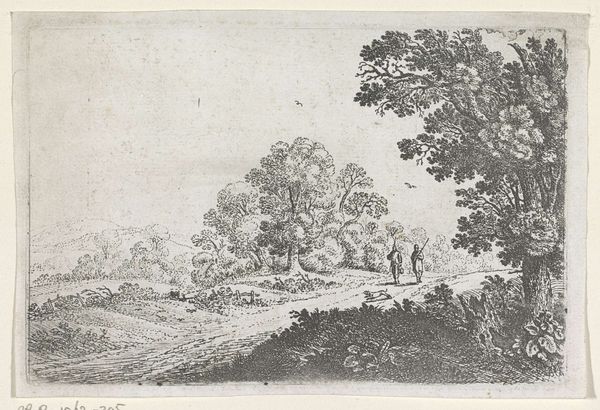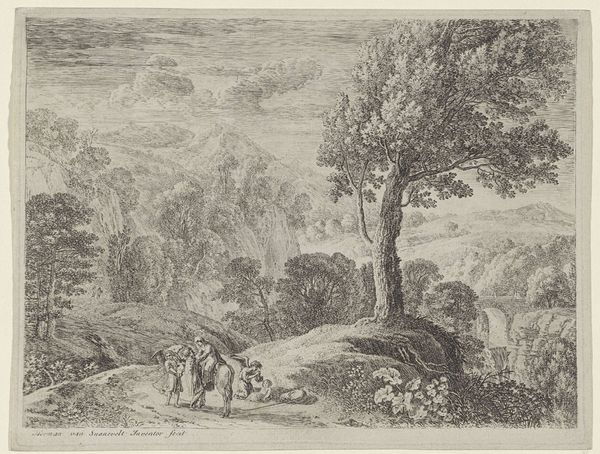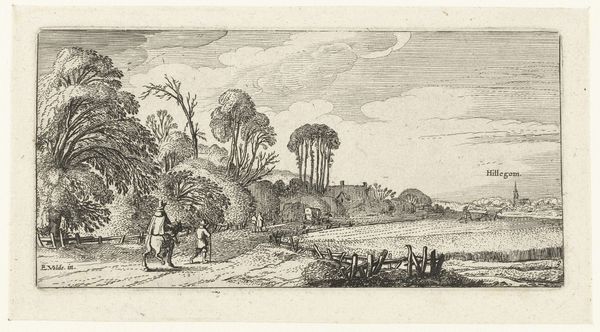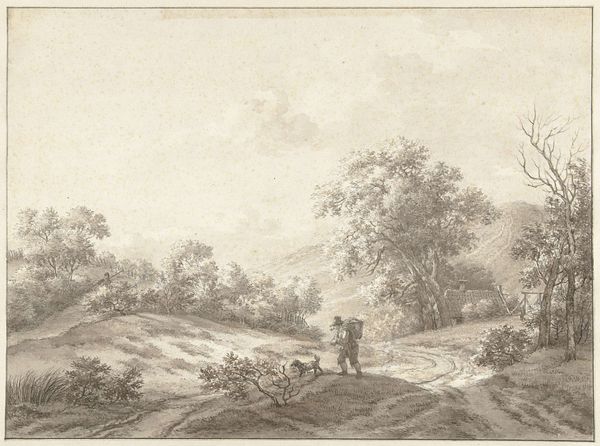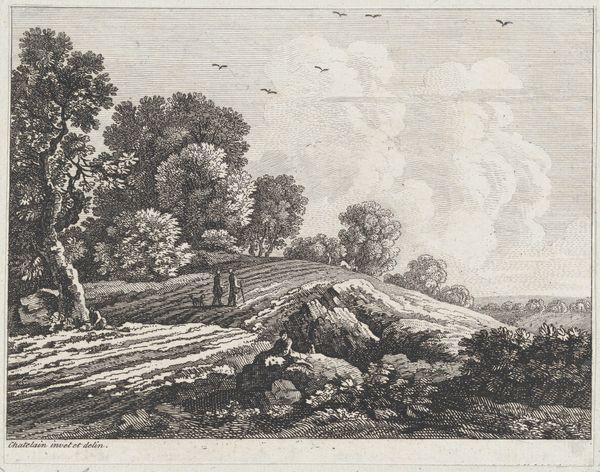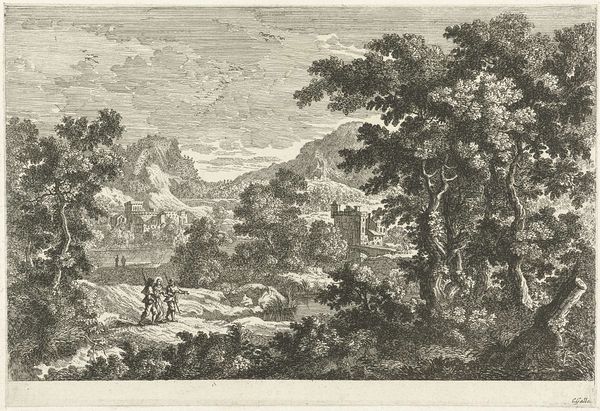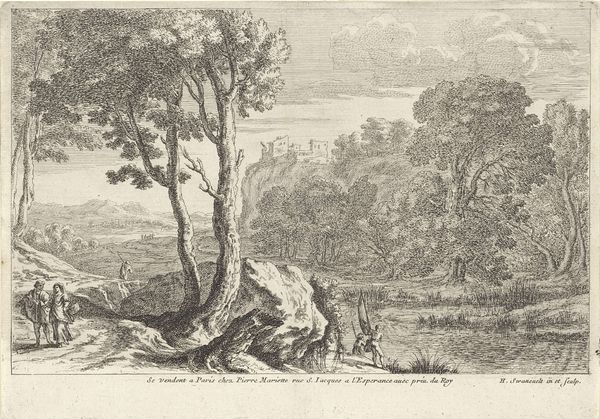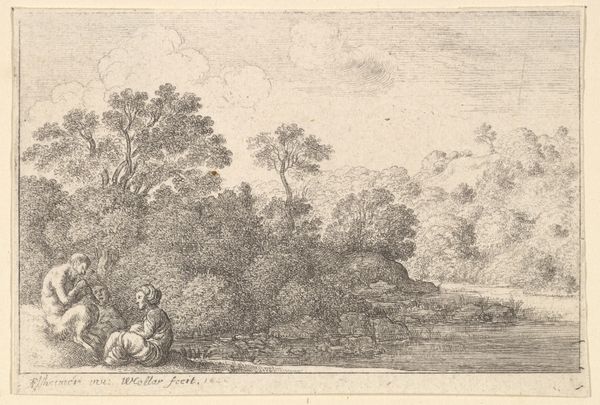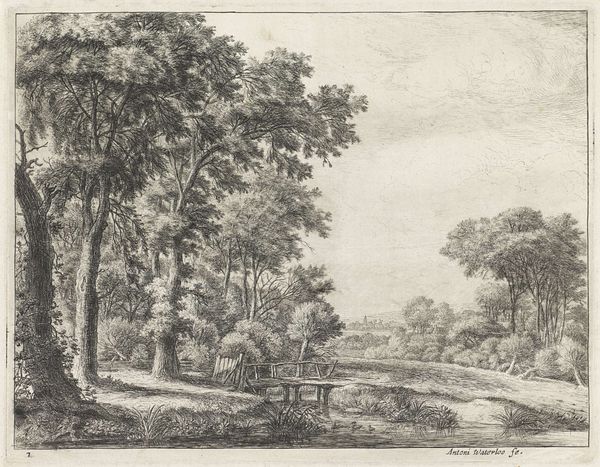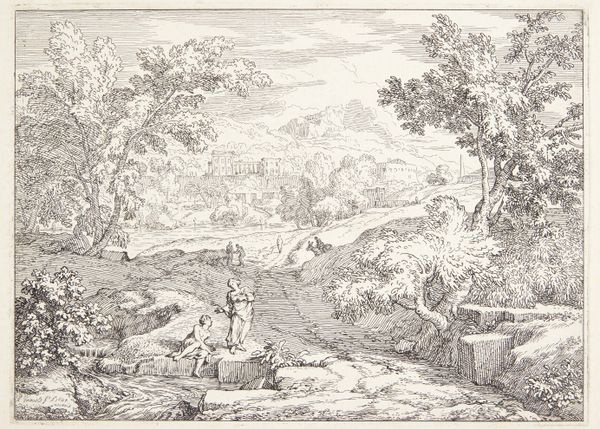
print, etching
#
narrative-art
#
baroque
# print
#
etching
#
landscape
#
figuration
#
history-painting
Dimensions: height 214 mm, width 284 mm
Copyright: Rijks Museum: Open Domain
Rembrandt van Rijn made this print, *The Flight into Egypt,* using an altered plate from Seghers. This printmaking technique involves covering a metal plate with a waxy, acid-resistant substance, and then scratching into the surface to create an image. The plate is then immersed in acid, which bites into the exposed lines. Here, the use of etching allowed Rembrandt to achieve a remarkable level of detail, with delicate lines defining the figures of Mary, Jesus, and Joseph as they flee. The landscapes are built up through meticulous layering of marks. Look closely, and you can almost feel the weight of the etched lines, and the time it took to create them. Prints like these existed within a growing economy of images, as the rise of a market for art fostered experimentation. In this context, Rembrandt’s use of an altered plate speaks to a spirit of resourceful innovation that blurred the boundaries between artistic creation and reproduction. It's a testament to how artistic meaning can be found in the making, as much as in the final image.
Comments
No comments
Be the first to comment and join the conversation on the ultimate creative platform.

